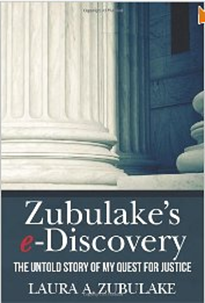Both Sides Instructed to Use Predictive Coding or Show Cause Why Not – eDiscovery Case Law

As reported in Ralph Losey’s e-Discovery Team® blog, Vice Chancellor J. Travis Laster in Delaware Chancery Court – in EORHB, Inc., et al v. HOA Holdings, LLC, C.A. No. 7409-VCL (Del. Ch. Oct. 15, 2012) – has issued a “surprise” bench order requiring both sides to use predictive coding and to use the same vendor.
As Ralph notes, this “appears to be the first time a judge has required both sides of a dispute to use predictive coding when neither has asked for it. It may also be the first time a judge has ordered parties to use the same vendor.” Vice Chancellor Laster’s instruction was as follows:
“This seems to me to be an ideal non-expedited case in which the parties would benefit from using predictive coding. I would like you all, if you do not want to use predictive coding, to show cause why this is not a case where predictive coding is the way to go.
I would like you all to talk about a single discovery provider that could be used to warehouse both sides’ documents to be your single vendor. Pick one of these wonderful discovery super powers that is able to maintain the integrity of both side’s documents and insure that no one can access the other side’s information. If you cannot agree on a suitable discovery vendor, you can submit names to me and I will pick one for you.
One thing I don’t want to do – one of the nice things about most of these situations is once people get to the indemnification realm, particularly if you get the business guys involved, they have some interest in working out a number and moving on. The problem is that these types of indemnification claims can generate a huge amount of documents. That’s why I would really encourage you all, instead of burning lots of hours with people reviewing, it seems to me this is the type of non-expedited case where we could all benefit from some new technology use.”
Ralph notes that there “was stunned silence by all attorneys in the court room after that order. It looks like neither side saw it coming.” It will be interesting to see if either, or both party, proceeds to object and attempt to “show cause” as to why they shouldn’t use predictive coding.
So, what do you think? Is this an isolated case or the start of a trend? Please share any comments you might have or if you’d like to know more about a particular topic.
Disclaimer: The views represented herein are exclusively the views of the author, and do not necessarily represent the views held by CloudNine Discovery. eDiscoveryDaily is made available by CloudNine Discovery solely for educational purposes to provide general information about general eDiscovery principles and not to provide specific legal advice applicable to any particular circumstance. eDiscoveryDaily should not be used as a substitute for competent legal advice from a lawyer you have retained and who has agreed to represent you.






